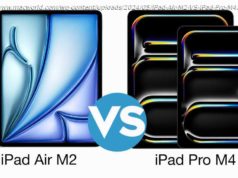It can be frustrating when your VPN won’t connect, but it can be surprisingly easy to fix. Here are the tips you need to get up and running again.
Getting connected to your VPN (opens in new tab) is generally so easy that you barely notice it at all, so the first time you notice that your VPN won’t connect, it can be a real surprise.
Sometimes you’ll see a very obvious error message: ‚Can’t connect.‘ Other alerts are more cryptic, like ‚Error: 80AE470.‘ And some apps stop trying to connect, but don’t tell you why (thanks, developers.)
However unhelpful your VPN client might be, it’s not the end of the story, and this step-by-step guide covers everything you need to figure out the problem and get your VPN connecting again.
The first step in diagnosing why your VPN won’t connect is to make sure your internet connection is working correctly. Sounds obvious, but it’s a good idea to rule out basic issues before you start playing around with VPN or device settings. So, reboot your device, maybe your router (opens in new tab), then open a browser, visit a couple of sites, collect emails if you’ve a separate email app, stream Netflix, and just spend a couple of minutes confirming everything looks normal.
VPNs often have thousands of servers, so there’s a chance that your app’s preferred choice is down right now. And even if the server is running, maybe it’s so overwhelmed with other users that it’s blocked further connections. Browse your VPN’s location list and try connecting from somewhere else.
Your VPN’s protocol (opens in new tab) defines how it connects to servers, and some protocols are more reliable than others. Open your app Settings box and look for protocol-related settings. If your app has some (and not all do), you might see options like OpenVPN (opens in new tab) (maybe with UDP or TCP flavors), WireGuard (opens in new tab), IKEv2, L2TP and more. Ideally we’d recommend trying to connect using at least OpenVPN, then IKEv2 or WireGuard, but if you don’t have these, just choose a couple of options from your app’s list.
VPN connection issues could be down to a wider problem with your provider’s network, rather than any issue with your setup. Check your provider’s status page, if it has one (check social media if it doesn’t) for any updates. IPVanish is a great example, and its status.ipvanish.com page is replete with performance charts showing servers online and details on any current outages.
Try connecting to your VPN from a different device, if available. If you can’t connect from that, either, that suggests there’s a network issue between you and the VPN, or maybe a VPN outage. But if the second device works as usual, it looks like the problem is somewhere on your original hardware.
If your VPN won’t connect, this could indicate that your app has a bug, or maybe its setup is corrupted. Check this out by removing or uninstalling your VPN, then downloading and reinstalling the latest version.
Don’t take any shortcuts, especially on Windows – for instance, trying to install the new app over the current version. Do a proper clean reinstall where you uninstall the app, reboot and then install the new one.
If you’re not connecting from your regular network – maybe you’re using a public hotspot you’ve never used before – then it’s possible it’s set up differently, or maybe it’s trying to block VPNs entirely.






